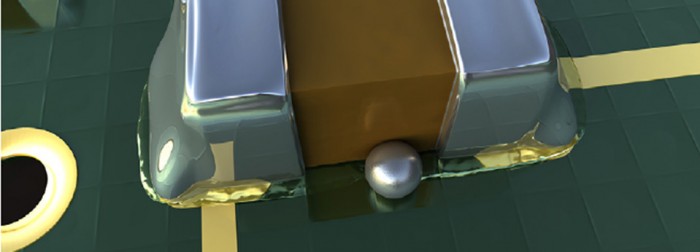Keywords: indium, Indium Corporation, bismuth alloys, bismuthSaveSave
The 6 Alloy Families: Bismuth
Eric Bastow: Today we're going to be talking about this really unique metal called bismuth. One of the unique things about bismuth metal is, unlike other metals that contract when they solidify, bismuth actually expands. Bismuth also readily alloys with other metals like tin, lead, and indium, and it forms many very, very low melting point alloys.
One of the most common is that it's used a lot in fire suppression. If you see the sprinkler systems in public buildings, there's actually a little piece of a bismuth alloy metal in there that melts at something like 117 Fahrenheit, so that if a fire breaks out in the building, that warms up and it melts, it releases the valve, and the water comes out. It's used in many thermal applications like that; whenever you have to something that, when it gets to a certain temperature, it needs to stop working or something needs to happen. We call them thermal fuses, thermal links, things like that. If you've ever seen a magician and he has his magic spoon, and he's rubbing the spoon, and then you see it slowly droop over and melt, that's because it's not made out of stainless steel like a real spoon. It's made out of a low-temperature bismuth alloy, and his body heat is enough to get it to kind of soften so that it will, not totally melt, but will kind of droop over.
It's also used a lot in fixturing application, because it does expand when it solidifies. You can put it in an enclosed container and put something else inside of there, and pour it in when it's liquid, and, when it solidifies, it will expand and grip onto whatever it's in contact with.
One of the things that is also done with low-temperature alloys of bismuth is this thing called tube bending. If you've ever taken a copper tube, or any sort of metal tube, and you try to bend it, it will kink. One of the things that you can do is you can take that tube, you can fill it with one of these low-temperature bismuth alloys, and bend it to shape. The alloy inside the tube will prevent it from kinking, and then you can take that tube and put it in some sort of hot medium, even like boiling water, which would be above the melting point of the alloy, and that alloy would flow out and you'd have your tube.
It's also used for grinding of lenses, like in glasses. The lens is actually kind of cast into the low temperature alloy, and then it can grind it. It's also used in many soldering applications for soldering things like LEDs to a substrate. LEDs, some of them anyways, are temperature sensitive. If you've got them up to a soldering temperature, like with a normal solder, you can actually damage the LED.
This is bismuth, again another really, really cool metal; very, very crystalline and brittle, as you can see. If you're interested in bismuth like I am, please send us an email at [email protected].


